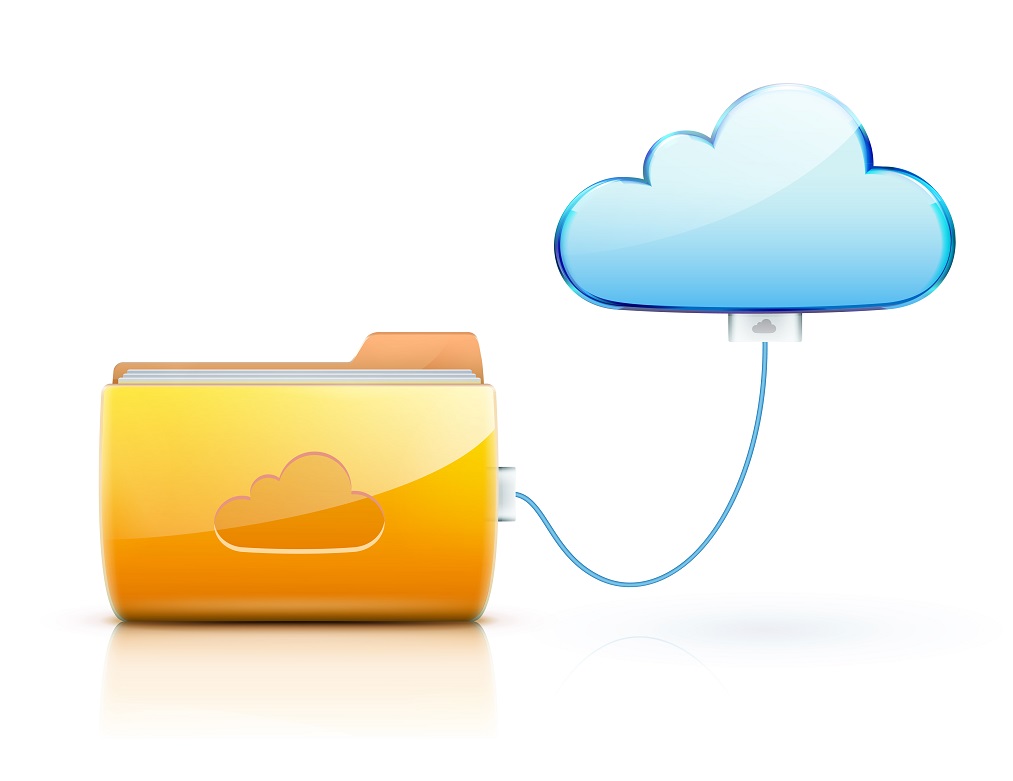Jul 8, 2021
Spyware can be a user’s nemesis. Once a user’s device is infected, spyware can collect a variety of personal and sensitive information, depending on the type of spyware. Here is what you need to know about spyware and how to detect it.
Spyware is a type of malware that infects a user’s computer and spies on the system by continuously monitoring it, including keystroke activity, the user’s web browsing habits, screenshots, and email activity. Spyware can also turn on the user’s webcam and watch what they are doing in real life.
If not stopped, spyware can infect the user’s computer with other types of malware or otherwise damage the computer. It will also send the sensitive information it collects to another entity, who can use the information to harm the user, such as selling it to a third party or for identity theft.
Different types of spyware
There are a handful of spyware types, which can have similar tactics when attacking a user’s computer or network and are not mutually exclusive. Here are the most nefarious spyware types.
System monitors. This type of spyware is also known as a keylogger because it records a user’s computer activities – keystrokes, visited websites, search history, email activity, chat and messaging communications, and system credentials such as logins and passwords.
Trojans. There are many types of Trojans and spyware can be one of them. Named after the ancient Greek story of the Trojan Horse, a trojan is a type of standalone malware that may pretend to offer some useful functionality, while dropping a malicious payload in the background. These payloads range from delivering ransomware and other malware onto the computer, deleting files, allowing unauthorized access to personal information, stealing credentials, modifying online transactions, etc. Banking trojans acquire the user’s credentials when logging into financial or banking portals.
Browser password and Infostealers. This type of spyware steals passwords and profitable information from any source used by the user to collect passwords, login credentials, and other sensitive information.

How does a user get spyware?
A user’s machine can be infected with spyware in much the same way as other types of malware. It can exploit browser security vulnerabilities to innocently display an infected ad or infect a device when the user unknowingly clicks on an infected email link (phishing), visits a malicious website, or downloads software from an untrustworthy site. You can also get infected by clicking on unusual social media or text messages.
How to detect spyware?
Many times, spyware will cause unexpected problems with your computer, such as:
- Spinning applications on start-up or shutdown and/or slow system response
- A sudden increase in banner ads and pop-ups
- Faster-than-normal depletion of the computer battery
- Problems logging onto secure sites
- New applications and tools that the user did not install
There are several ways to detect spyware:

Startup tab in Task Manager. For Windows PCs, check for suspicious software in the Startup tab in Task Manager. If anything looks suspicious, the user should temporarily terminate the process and research what the program is. If it is malicious, the user should immediately delete it.
For Mac computers, click “Finder” and select “Applications” from the sidebar. Again, review the list of applications and if anything looks suspicious, do your research, and delete the app if it is malicious.
Temp files. The user can also check for spyware in their TEMP folder. In fact, you can delete anything in the temp folder just to be safe because they are, after all, temporary files.
Install anti-malware software. The best way to detect – and stop spyware – is by installing an anti-malware solution and scanning the computer. Solutions from reputable vendors will identify and delete the spyware from the system.
Can you get spyware on your mobile phone?
Yes. Both iPhones and Android phones can be victims of spyware. On a mobile device, spyware runs undetected, monitoring and recording a user’s actions without them knowing. It can spy on call logs, contact lists, the photos a user has taken on their phone, a user’s location, even record anything heard on a device’s microphone and take pictures.
Acronis detects and stops spyware
Acronis offers comprehensive cyber protection solutions that detect and stop spyware. If you are a business and looking for the right antivirus software, Acronis Cyber Protect keeps your remote workers’ devices secure in the post-pandemic reality. The solution provides a unique integration of data protection and next-generation cybersecurity capabilities, delivering improved security and lowering costs. Whether your business is large or small, Acronis Cyber Protect automates and streamlines system and data protection to mitigate risk and avoid downtime.
If you are a managed service provider (MSP), you can protect your clients’ systems with Acronis Cyber Protect Cloud, a solution that enables you to deliver cyber protection in an easy, efficient, and secure way. With a single platform, your customers can achieve the ultimate in data protection with hybrid cloud backup, disaster recovery, and protection from ransomware and spyware. Acronis Cyber Protect Cloud protects endpoints – including remote devices – systems, and data. It also includes AI-based behavioral detection that stops zero-day attacks, performs URL filtering and vulnerability assessments, and provides videoconference protection and automated patch management. With the power of Acronis Cyber Protect Cloud, you can detect and stop cyberattacks of any nature and ensure your clients can recover their data and systems in the shortest time possible.
Aug 1, 2016

Acronis®, a leading provider of hybrid cloud data protection, today at HostingCon announced its latest update of Acronis Backup Cloud, a cutting-edge backup-as-a-service (BaaS) solution for service providers, hosters, and cloud resellers that provides complete data protection for small and medium-sized businesses (SMBs). Today’s SMBs have been left exposed to data loss and malicious attacks due to inadequate solutions that do not protect the full spectrum of servers and user endpoints, including mobile devices, and Cloud services and applications, such as Microsoft Azure and Office 365. Acronis enables service providers to rapidly address these new and critical SMB data protection needs with the latest release of Acronis Backup Cloud – its easiest, fastest, most complete cloud backup solution ever.
Acronis Backup Cloud provides service providers, hosters and cloud resellers with a turn-key backup as a service solution that is so easy to use, they can be up and running within minutes. Acronis Backup Cloud protects all servers, workstations and mobile devices, and extends to cloud services and applications to provide complete protection.
Acronis Backup Cloud easily plugs into the most common platforms in use by service providers and hosters today, including Linux, Virtuozzo, Azure, Docker, Open-Xchange, XEN Server, and KVM. The solution also backs up data and workloads across the full range of customer environments, including Microsoft, Amazon EC2, Windows and Office365, Linux, Mac, VMware, Hyper-V, RHEV, XEN, Oracle VM, Exchange, SQL Server, SharePoint, Active Directory, iOS, and Android.
Acronis Backup Cloud also integrates with the most popular cloud management solutions to automate customer billing, monitoring, and provisioning. This includes Odin Service Automation®, WHMCS®, HostBill®, APS Standard, LabTech, Windows Azure Pack, and Flexiant® Cloud Orchestrator.
Service providers can use a use a single powerful dashboard to deploy the software, manage customers, and monitor backups, all while supporting clients’ distributed business environments with multiple IT tiers and administration controls for users and groups.
Within hours, service providers can also deploy secure, private cloud destinations with their own storage or third-party cloud storage, and now with Acronis Software Defined Storage using commodity hardware. The new Acronis Storage option substantially lowers scale-out storage costs while overcoming the capex challenges related to traditional high-end storage offerings.
Why Now’s the Time to Move to Acronis Backup Cloud
- Powerful Cloud Automation – Simplifies the sale of BaaS by combining proven Acronis backup technology with a scalable hybrid cloud architecture that integrates with the most popular cloud management tools.
- True Multi-Tier Solution – Offers a multi-tier solution that enables cloud resellers to provide varying levels of capabilities to their customers from a single data protection platform.
- Flexible Storage – Provides flexible storage options for customer backups, including local, on-premises, service-provider hosted, Acronis-hosted, and 3rd-party hosted, including Microsoft Azure, Amazon S3, and IBM SoftLayer.
- Powerful Multi-Tenancy – Reduces costs and overhead by consolidating customer views and administration into one, easy-to-use, unified management console, available anywhere.
- Unmatched Control Over Services – Allows service providers to offer a unique blend of customer self-service and white glove management to fit the needs of their customers.
Jun 6, 2016

Acronis Backup Cloud 5 equips service providers to quickly solve customer data protection problems with a proven, comprehensive local and cloud backup and recovery service. Acronis Backup Cloud is part of the complete set of Acronis data protection solutions, which includes backup, cloud storage, disaster recovery, and file sync and share.
Acronis Backup Cloud features an extremely easy-to-use and intuitive interface and management console, and creates the next generation user experience for Acronis Cloud solutions. Acronis Backup Cloud makes it easier than ever for service providers and SMBs to manage protected devices, no matter where they are located or where the business wants the backup stored – either locally, in the cloud or both.
The new version 5 of Acronis Backup Cloud delivers the following benefits:
- Easier for service providers and end users – features in-product “buy now” links, custom service offerings based on machine type, and integration with leading management platforms and third party storage, including Odin Service Automation®, WHMCS®, HostBill®, APS Standard, Flexiant®, and Microsoft Windows Azure Pack®.
- Expands data protection coverage – supports the running of virtual machines from backup, including physical machines, and enables disaster recovery scenarios and large-scale recovery, providing additional service package offerings.
- Provides advanced monitoring – includes automated self-service and monitoring for end users, and MSP monitoring tools for backup health and status.
Jun 6, 2016

Acronis Partner Program for Cloud is uniquely designed to accelerate cloud data protection services revenue with a subscription model for service providers. The program provides leading solutions, resources, programs and incentives to help Acronis partners profit from the huge market growth predicted for cloud data protection services, which include backup, disaster recovery and file sync and share.
The Acronis Partner Program for Cloud supports any deployment model, including service provider-hosted, Acronis-hosted and hybrid, and any business model with licensing flexibility. This includes turnkey cloud data protection services with minimal integration that are quick to deploy and easy to use, as well as offerings that are more deeply integrated into partner technology and services portfolios.
Acronis Enables Service Providers to Deliver Complete Data Protection Solutions
Acronis is driving the transformation of data protection with easy, complete and affordable solutions for small businesses and mid-sized companies. Acronis provides complete data protection through an integrated set of solutions, including backup, disaster recovery, and file sync and share. Acronis protects businesses from all types of data loss related to natural and man-made disasters, including files, systems and applications.
For service providers, Acronis delivers a complete multi-tenant, multi-tiered cloud architecture across infrastructure and data centers, operations and storage. Acronis Cloud solutions provide automation of services and complete control of provisioning, billing, monitoring and management, enabling partners with highly scalable solutions that can support millions of end users.
Acronis Cloud solutions support the industry’s broadest range of storage options, including multiple destinations, seeding, migration, and any mix of single customer sources, including on-premises, and the broadest range of workloads and data sources, including XEN®, KVM, Linux®, Virtuozzo, Docker®, Open-Xchange, and MySQL®, as well as Windows®, Mac®, Hyper-V, VMware®, RHEV, Oracle® VM, Microsoft Exchange® and SQL.
All Acronis solutions are powered by the Acronis AnyData Engine – a set of unique, deep, and powerful data protection technologies that capture, store, recover, control, and access any data from any location.












